The Montana coneflower starts its bloom journey tucked up tightly, the bud’s lattice work reminiscent of an antique window. Its lines criss-cross around the base, but only temporarily. As the flower matures, the base expands, and before you know it, a flower emerges. Open-faced, it greets the sun in a pinwheel of purple color.
The next flower stage is where the real magic happens. Visual artists know how to capture motion in a static form (think of your favorite sculpture, painting, or sketch.) Two-dimensional renderings can capture a leg tossed gallantly in mid-step, a torso twisting to accomplish a casual glance, or an arm outstretched overhead. It’s magic.
The coneflower manages to capture movement in static form, too. When the petals finally open to their fullest reach, the ends turn slightly on an angle, creating an illusion of movement. I call it the spiral effect. It’s magic.
Another kind of dazzle: the way plants re-seed themselves. There is a saying that goes, that goes, “money begets money.” And while I’m not thrilled to apply a concept usually reserved for capitalism to explain what’s happening in my garden, I do believe there’s a cross-over here: plants beget plants. A whole new crop of self-seeded annuals grow between hardy annuals, perennials, and vegetables. Cosmos, feverfew, and lemon balm have found their place amongst the delphinium, strawflower, and carrots. I will selectively remove about half of these volunteer plants to maintain a growing environment for plants I intentionally placed in the garden. Still, I’m not entirely upset by the prospect of rogue cilantro and lemon balm taking over certain parts of the gardenscape.
However you describe your garden — cottage, pollinator, woodland — one thing remains the same: cultivating plants with similar growing requirements yields a consistency some gardeners aspire to. Cottage blossoms (like hollyhock or yarrow) or woodland blossoms, (like forget-me-nots or hellebore) grow synergistically, their respective attributes (color, height, texture) playing off of each other as the seasons moves forward. It makes sense why some gardeners dedicate beds to specific types of gardens.
My aesthetic is a little more… complicated? I like mixing different flowers that might not traditionally pair together. The marsh marigold grows beside the euphorbia, the yarrow sprouts within the creeping phlox (although that’s just because I haven’t cut it back yet), and strawflower grows alongside snapdragons. Some of these plants do not like this week’s hot temperature (ie, snapdragons), but others love heat; I’ve never seen iris raise their blossom heads so proudly.
I predict the cut flower garden, best described as a little cottage and a little wildflower, will explode in blossoms this week. On the horizon: lavender, peonies, and snapdragons.
See you next week for a new poem.
-Betsy

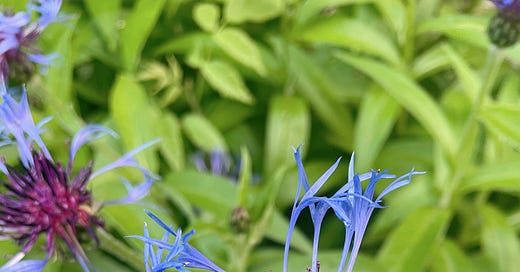



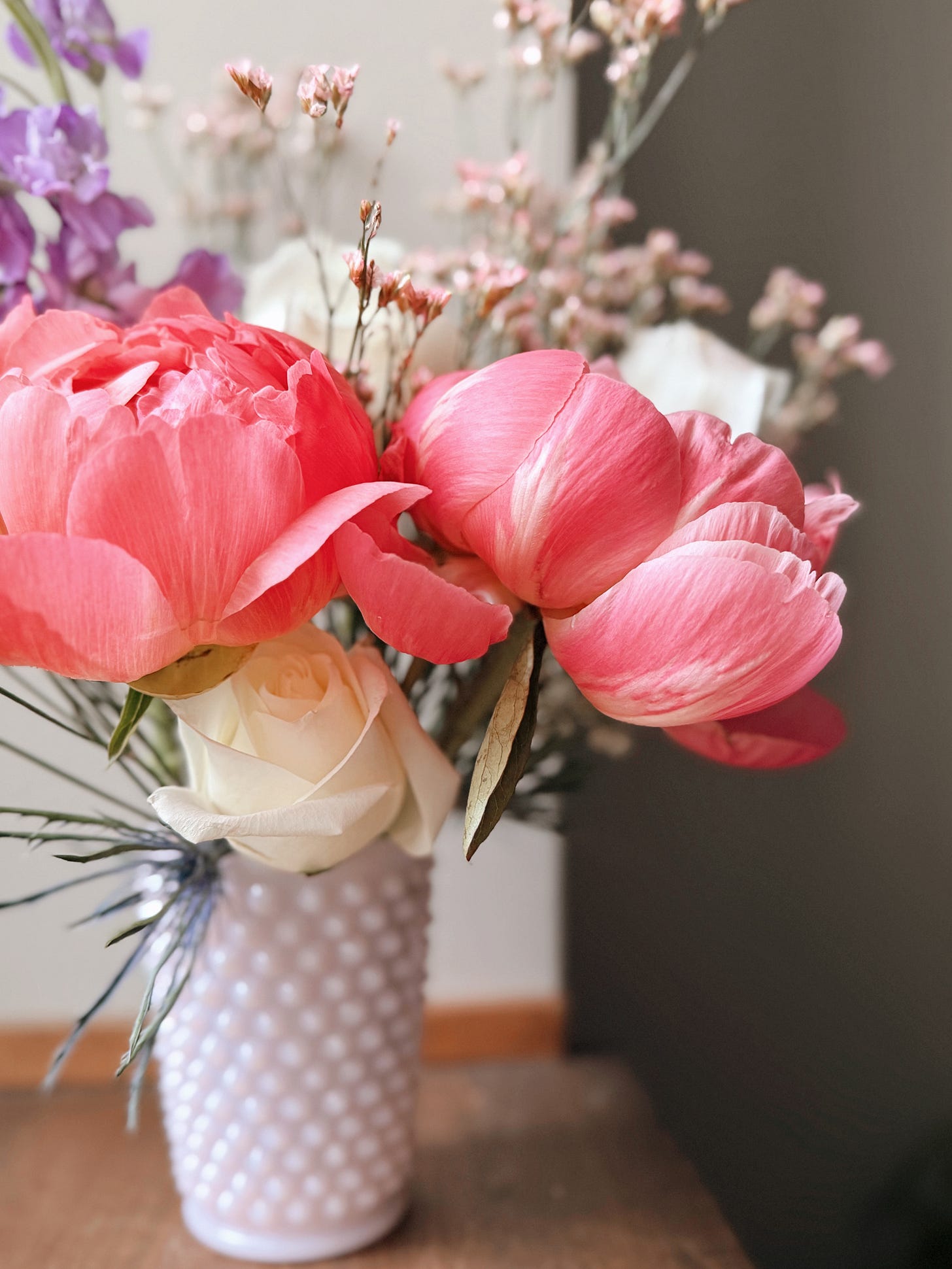
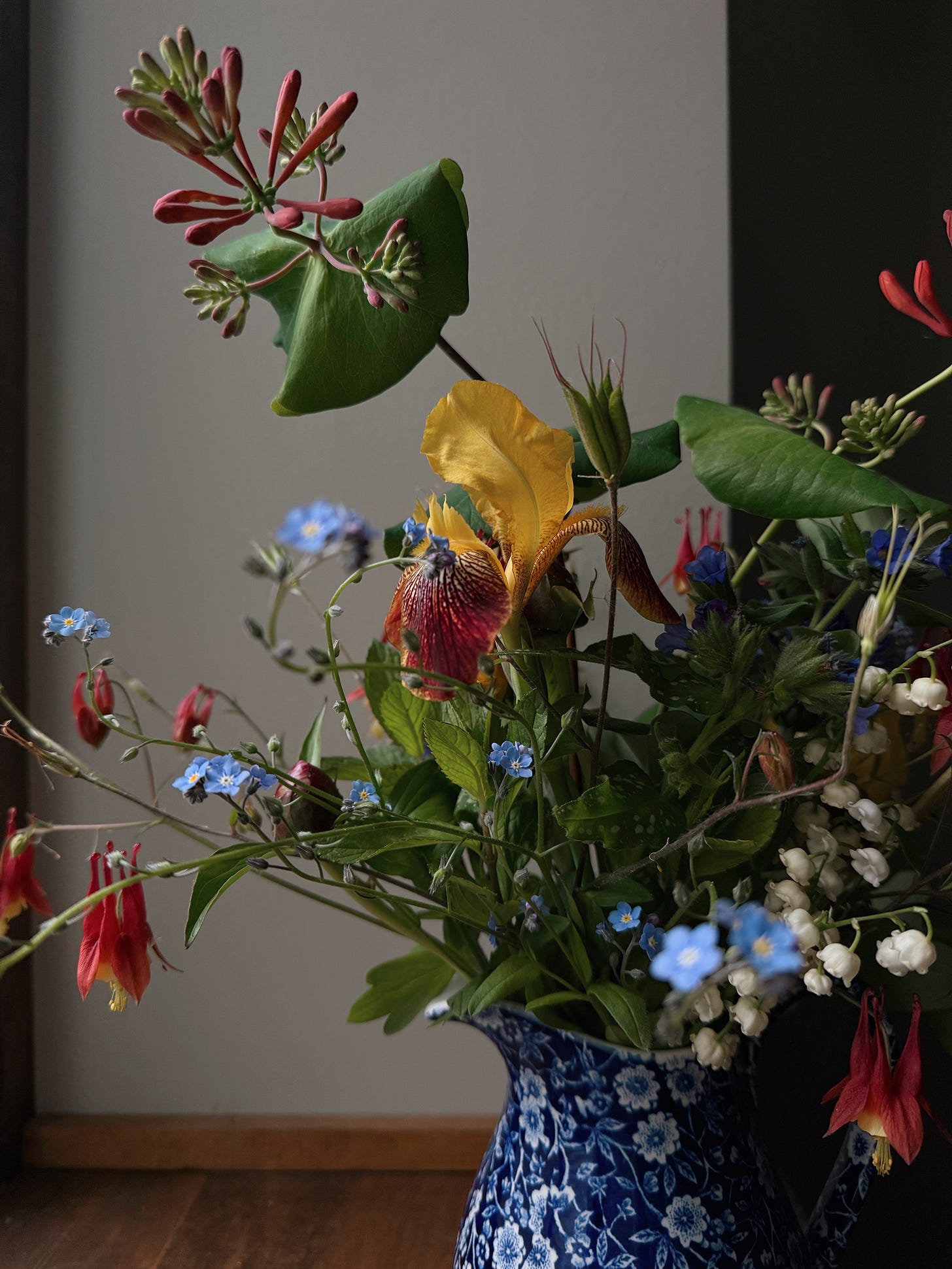
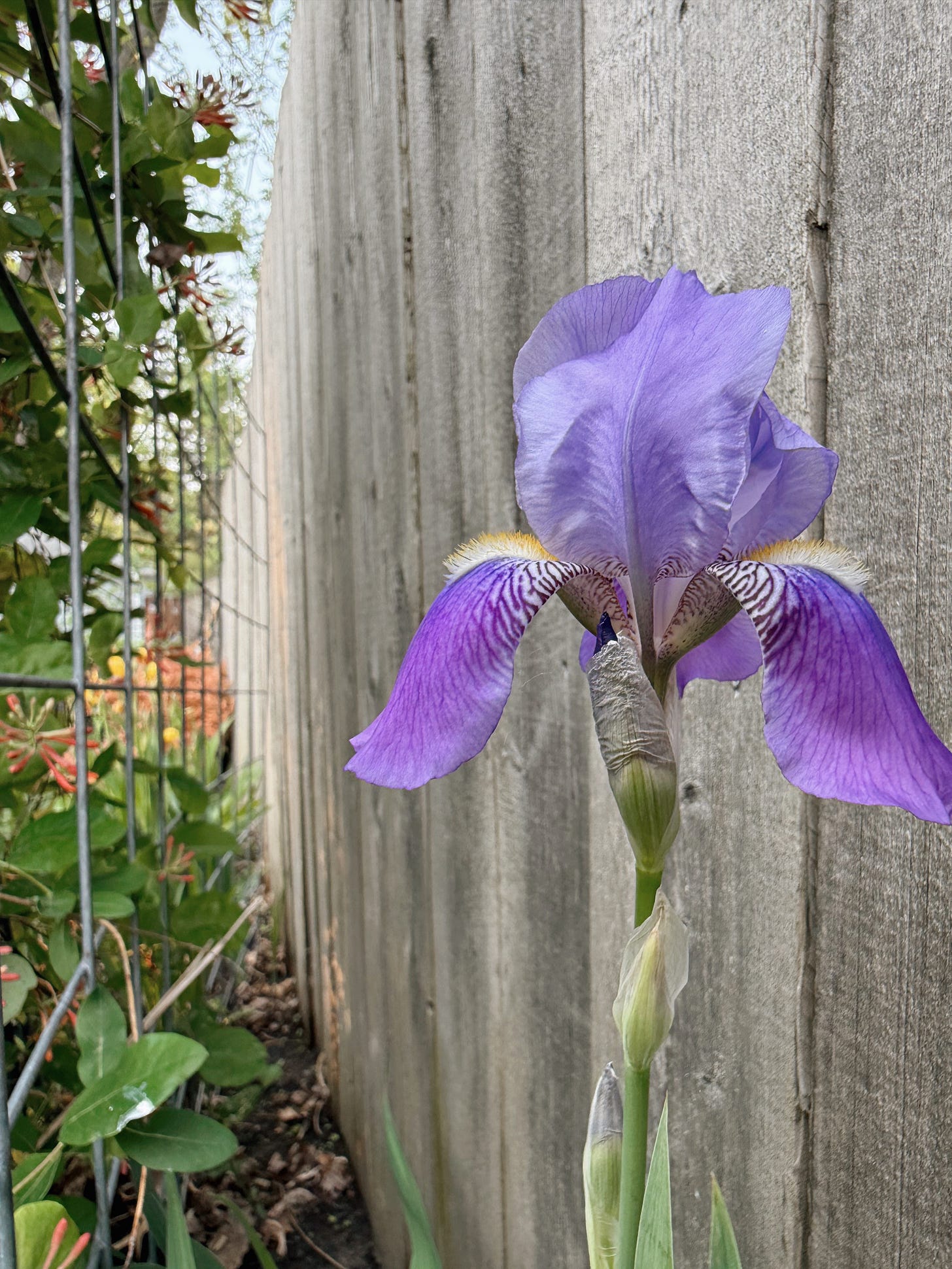
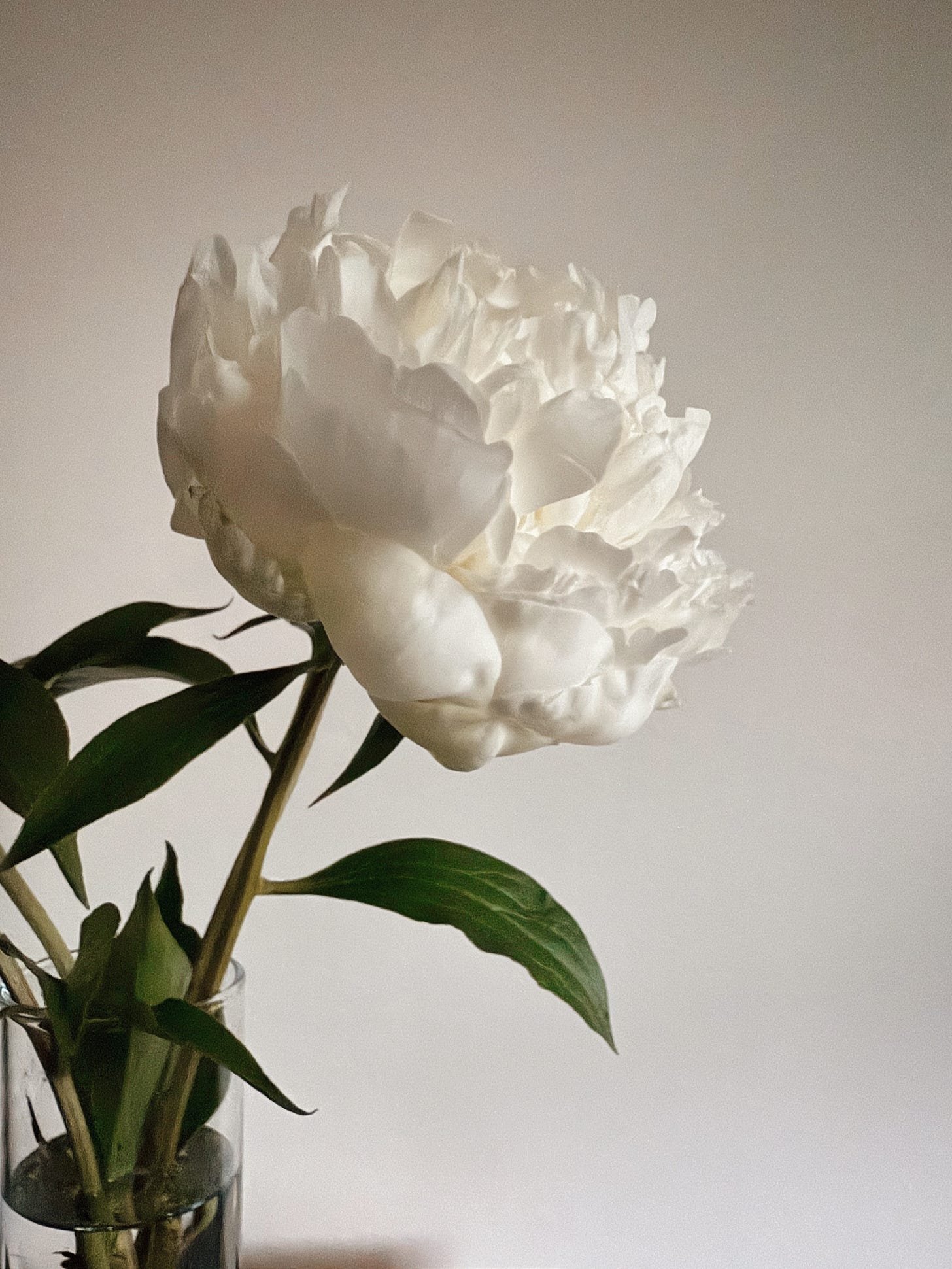
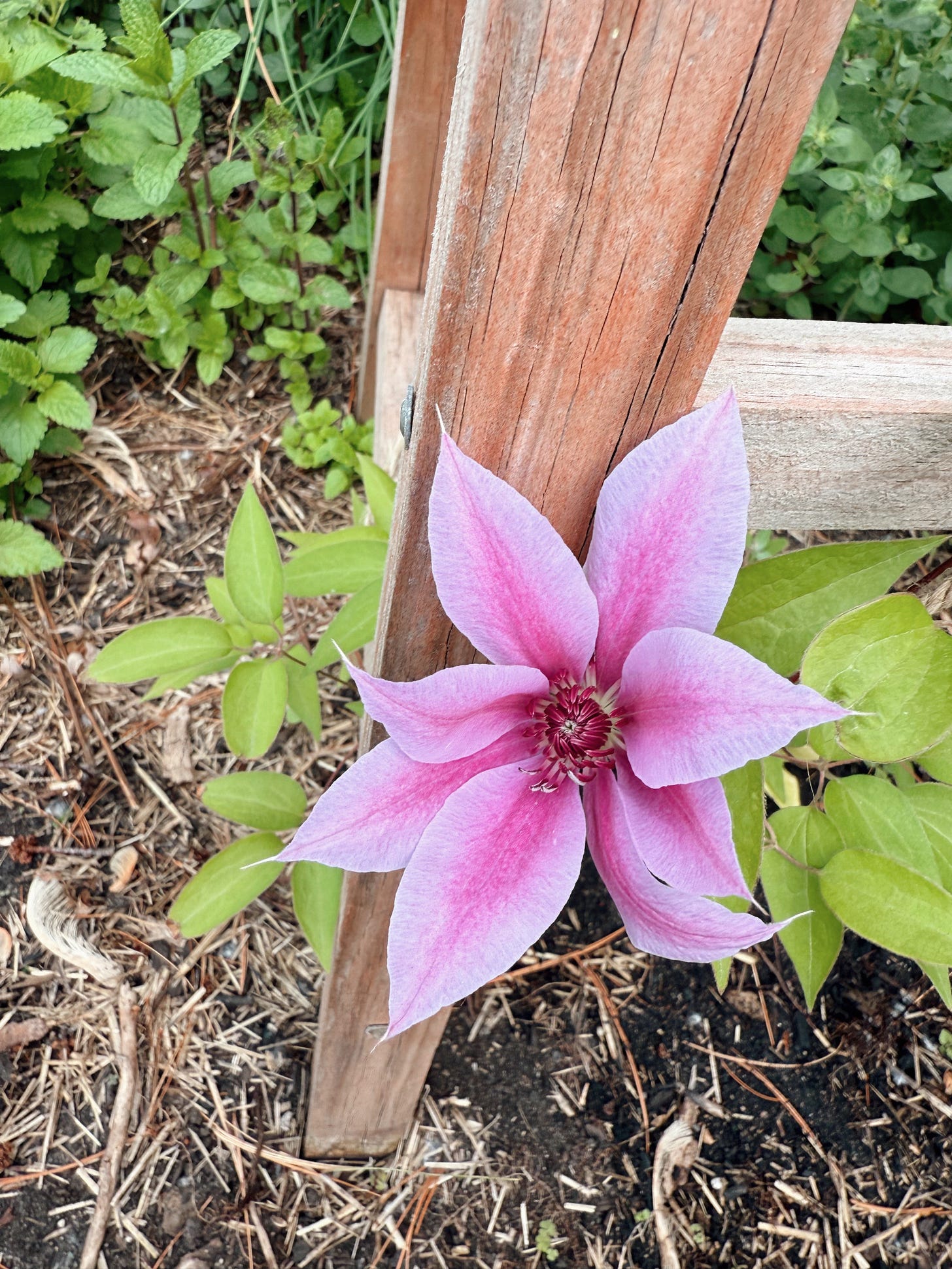

Your garden writing is so inspiring! I have learned to welcome volunteers in my garden. I think they are calling it chaos gardening.
I describe my gardens as "freestyle." That sounds much better than "willy-nilly, let's see what happens." Love you!